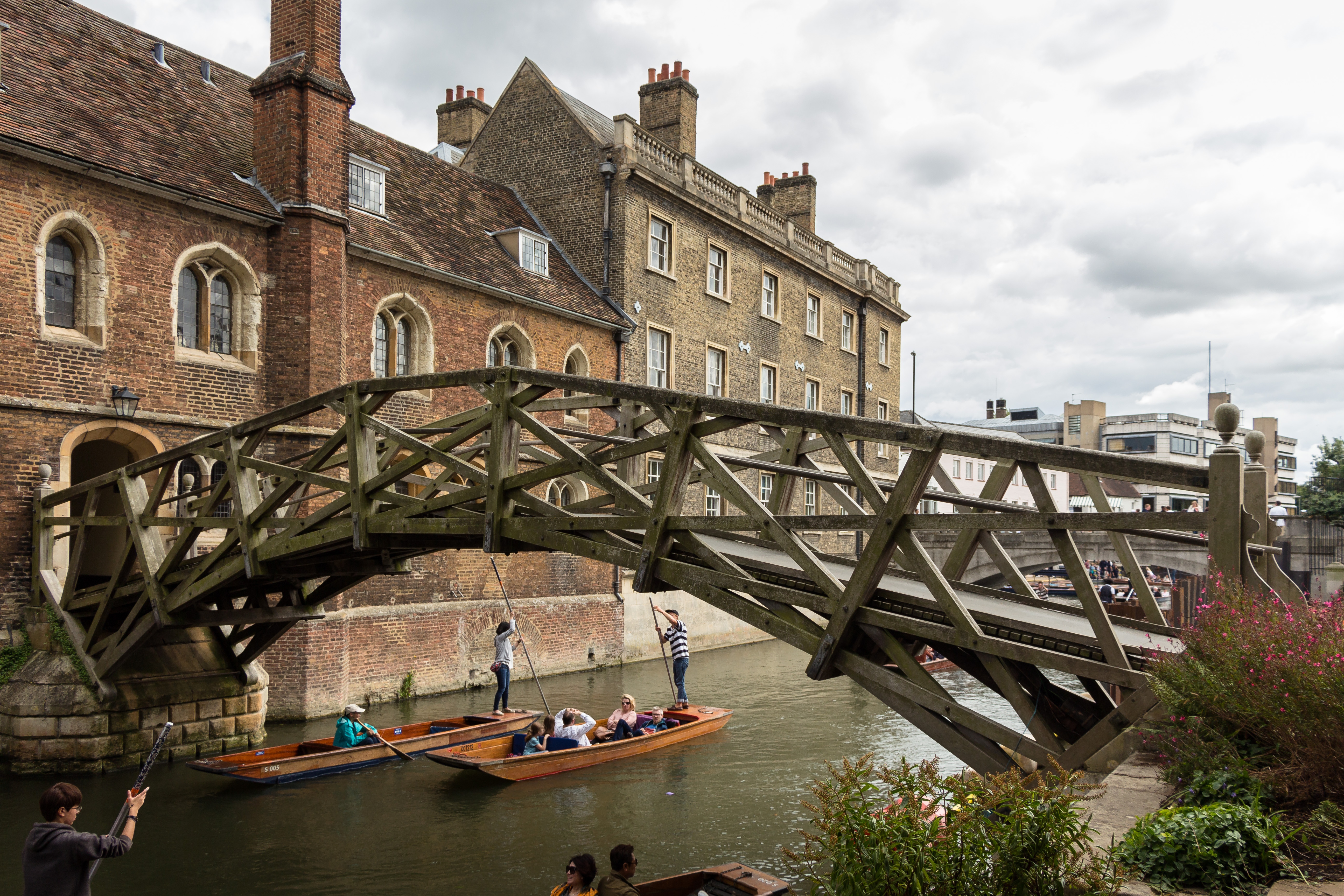The Mathematical Bridge is a footbridge across the River Cam in Cambridge, England, connecting two parts of Queens’ College. The original was erected in 1749 to a design by William Etheridge (1709–1776), and built by James Essex (1722–1784).[1] The present bridge, a 1905 reconstruction, is a designated Grade II listed building.[2]
The bridge spans the 50-foot (15 m) river using seven shorter lengths of straight timber arranged in a series of tangents to a circle of radius of 32 feet (10 m), seated on stone abutments; radial trusses tie the tangents together and triangulate the structure, making it rigid and self-supporting.[a]A tangent is a straight line that just touches the curve at that point. The design results in the tangential timbers being subjected mainly to compression, which wood is much better at resisting than bending.[1][3]
A similar technique was used to construct the arches of London’s original Westminster Bridge between 1739 and 1750, thus allowing ships to pass beneath during its construction.[3]
Myths and falsehoods
According to the Queens’ College web site, “For a bridge whose history is so well-documented, it is curious that so many false stories have become associated with it.” The bridge has no “official” name. Early records refer to it as Essex’s Bridge, or the Essex Bridge, after its builder, but in guide books from 1803 onwards it began to be called the Mathematical Bridge, and later Newton’s Bridge, after the myth that it was designed by Isaac Newton.[1]


